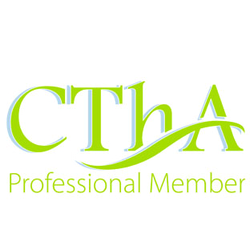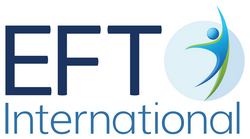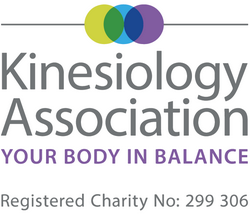Ante and Post Natal Exercise & Massage
Ante and Post Natal Exercises and Massage
Exercises Ante and Post Natal
During Pregnancy
Maintaining a regular exercise routine throughout pregnancy can help the-mum-to-be stay healthy and feel their best. Regular exercise during pregnancy can improve posture and decrease some common discomforts such as backaches and fatigue. There is evidence that physical activity may prevent gestational diabetes (diabetes that develops during pregnancy), relieve stress, and build more stamina need for labour and delivery.
If the-mum-to-be is physically active before the pregnancy, they should be able to continue physical activity in moderation and making a few changes to their normal exercise routine. It is always good to discuss exercise plans with either the doctor or other health care provider early on. The level of exercise recommended will depend, in part, on the level of pre-pregnancy fitness.
If you have never exercised regularly before, you can safely begin an exercise program during pregnancy after consulting with your doctor of health care provider and do not try a new or strenuous activity. Walking is considered safe to initiate when pregnant.
After Pregnancy
Between six to eight weeks after giving birth, most of the changes that occur during pregnancy will have returned to normal. If you had a caesarean birth, a difficult birth, or complications, it may take a little longer to feel ready to start exercising. If you did not exercise during pregnancy, start with easy exercises and slowly build up to harder ones.
The most important exercises in the first few days after the birth are your pelvic floor exercises. Your pelvic floor muscles were stretched during pregnancy, and again if you had a vaginal birth, so it makes sense to start getting them back into shape as soon as you can.
Strengthening your pelvic floor will help to protect you against leaking wee (stress incontinence). It will also stabilise the joints in your pelvis and lower back, which can make it easier for you to move around, and may also reduce the risk of joint problems and back pain.
Your lower back and core abdominal muscles are weaker than they used to be. Your ligaments and joints are also more supple and pliable, so it is easy to injure yourself by stretching or twisting too much. Avoid any high-impact exercises or sports that require rapid direction changes.
Talk with your doctor about when is a good time for you to restart an exercise program.
And there is so much more!
Massage Ante and Post Natal
Prenatal massages are adapted for the anatomical changes you go through during pregnancy. In a traditional massage, you might spend half the time lying face down on your stomach (which is not possible with a baby belly) and half the time facing up (a position that puts pressure on a major blood vessel that can disrupt blood flow to your baby and leave you feeling nauseous).
But as your shape and posture changes, a trained massage therapist will make accommodations with special cushioning systems or holes that allow you to lie face down safely, while providing room for your growing belly and breasts. Or you might lie on your side with the support of pillows and cushions.
Prenatal massages are generally considered safe after the first trimester, as long as you get the green light from your practitioner and you let your massage therapist know you're pregnant. But you'll want to avoid massage during the first three months of pregnancy as it may trigger dizziness and add to morning sickness.
Research shows that massage can reduce stress hormones in your body and relax and loosen your muscles. It can also increase blood flow, which is so important when you're pregnant, and keep your lymphatic system working at peak efficiency. And it reconnects your mind with your body, a connection that's comforting.
Next Previous Blog/News
I heard that some people don't know what to do with all the time on their hands during this "stay home, stay safe" period. Others have begun amazing new hobbies or are running around with their hair on fire juggling work from home, homeschooling, hom...
Next Previous Testimonials
"I suffer from a long-term sciatic problem that is severe and causes a good deal of pain. I have been working with Sonia for three months and my core strength has improved, as has all the muscle strain around the weak part of my spine. My osteopath says that he feels a real improvement. I love my sessions with Sonia, they are always varied and especially tailored to fit my very particular needs. She is thorough, kind and attentive. I have recommended her widely and will continue to do so." Jennifer S
"I have always been very active having played a number of sports to a very high standard. My focus has always been on strength and fitness and I realised after a couple of minor injuries that I had neglected some key principles. Working with Sonia was of course very different to working out in a gym or to any other training regime I had been involved in but it has so far had a huge impact on everything that I do - from walking to the tube and avoiding recurring foot injuries to my posture at work and also in the gym. I have learnt things about my body that I never knew and I now wish I had known before. I thought her style of pilates would be interesting and a change from my normal workouts but it has had a much deeper impact than I could have imagined. I now know so much more about my body and can put that knowledge to use in my workouts and everyday fitness regime. Just because you go to the gym 3 times a week does not mean you don't "need" Sonia - in fact I would suggest the opposite. In addition to this, on a personal level, Sonia always makes her sessions interesting. She is an interesting and engaging person who will make an introduction to Pilates Yoga or Somatic Movement a most worthwhile experience and even experts will benefit from her broad knowledge about the body and the mind. I couldn't recommend Sonia more highly to everyone, of all ages and all levels of fitness and experience." Graham H








